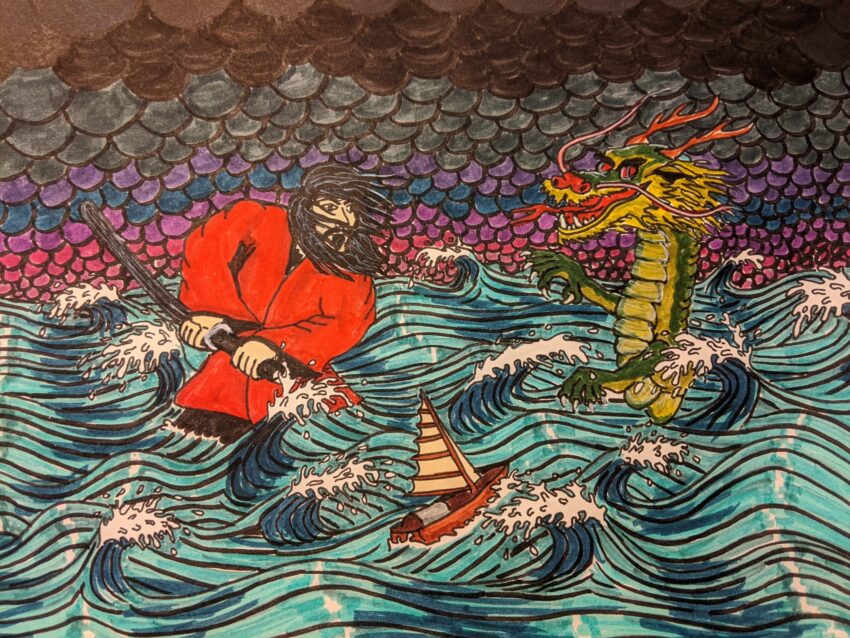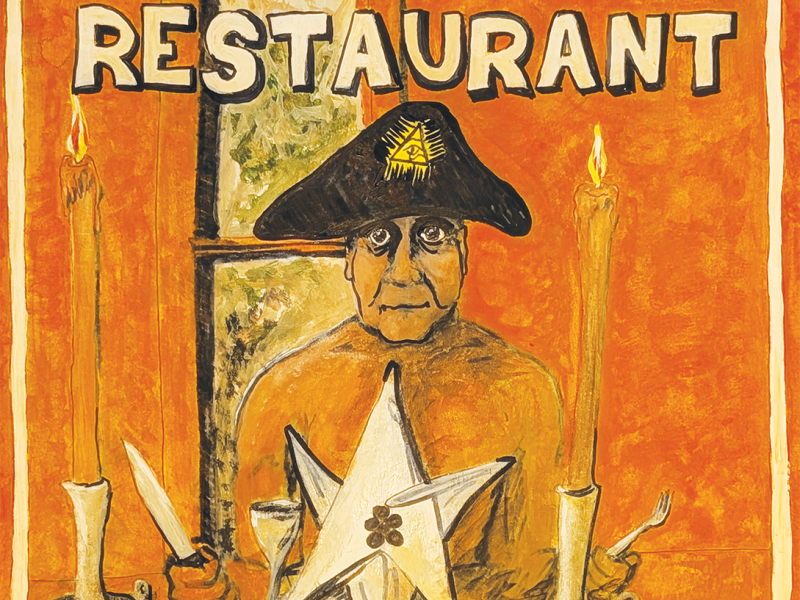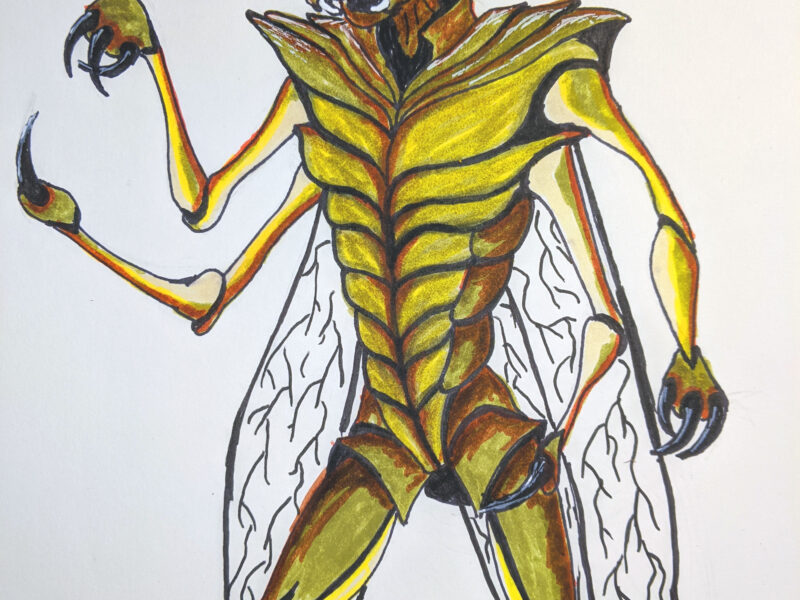This drawing titled, “Sea of Japan” is of Susanoo no Mikoto fighting a Dragon for control of a storm. I did this when I was first playing with the idea of painting in a Ukiyo E style. This is a piece I will eventually revisit and Likely do a full size gouache version.
If you have ever sailed the Sea of Japan, you likely remmeber that this is what a cal day on the water looks like. Sheesh.
Here is some background on Susanoo no Mikoto:
Susanoo no Mikoto, also known as Susanoo, is a prominent figure in Japanese mythology, revered as the Shinto god of the sea and storms. Here’s an exploration of his significance, myths, and cultural impact:
Significance:
- Susanoo is one of the major kami (deities) in Shinto mythology, the indigenous religion of Japan. He is considered a member of the “Three Precious Children of Amaterasu,” alongside his siblings Amaterasu (the sun goddess) and Tsukuyomi (the moon god).
- As the god of the sea and storms, Susanoo wields immense power over the natural elements, particularly the ocean and weather phenomena such as typhoons and hurricanes.
- In addition to his role as a deity associated with the sea and storms, Susanoo is also linked to other aspects of nature, agriculture, and warfare.
Myths and Legends:
- Susanoo’s most famous myth recounts his conflict with his sister, Amaterasu, which led to his banishment from the heavens and his descent to the earthly realm (known as the “Ama-no-Iwato” or “The Cave of the Sun Goddess”).
- According to the myth, Susanoo’s disruptive behavior, including his destruction of Amaterasu’s rice fields and his hurling of a flayed horse into her weaving hall, angered Amaterasu and prompted her to hide in a cave, plunging the world into darkness.
- To coax Amaterasu out of hiding, the other gods devised a plan involving music, dance, and a sacred mirror, ultimately leading to Susanoo’s expulsion from the celestial realm.
- Despite his initial tumultuous relationship with Amaterasu, Susanoo later redeemed himself through various heroic feats, including his slaying of the serpent Yamata-no-Orochi and his assistance to a mortal hero named Prince Yamato Takeru.
Cultural Impact:
- Susanoo’s myths and legends have left a profound mark on Japanese culture, influencing literature, art, theater, and religious practices throughout history.
- He is often depicted in traditional Japanese art and literature, such as Noh and Kabuki theater, as well as in contemporary popular culture, including manga, anime, and video games.
- Susanoo continues to be venerated in Shinto rituals and festivals, particularly those associated with agriculture, fishing, and protection from natural disasters.
- His story serves as a reminder of the complex dynamics within divine families, the importance of balance in the natural world, and the potential for redemption and growth even in the face of conflict and adversity.
In summary, Susanoo no Mikoto occupies a significant place in Japanese mythology as the god of the sea and storms, known for his tumultuous relationship with his sister Amaterasu and his heroic deeds. His myths and legends continue to inspire reverence, creativity, and reflection within Japanese culture and beyond.



